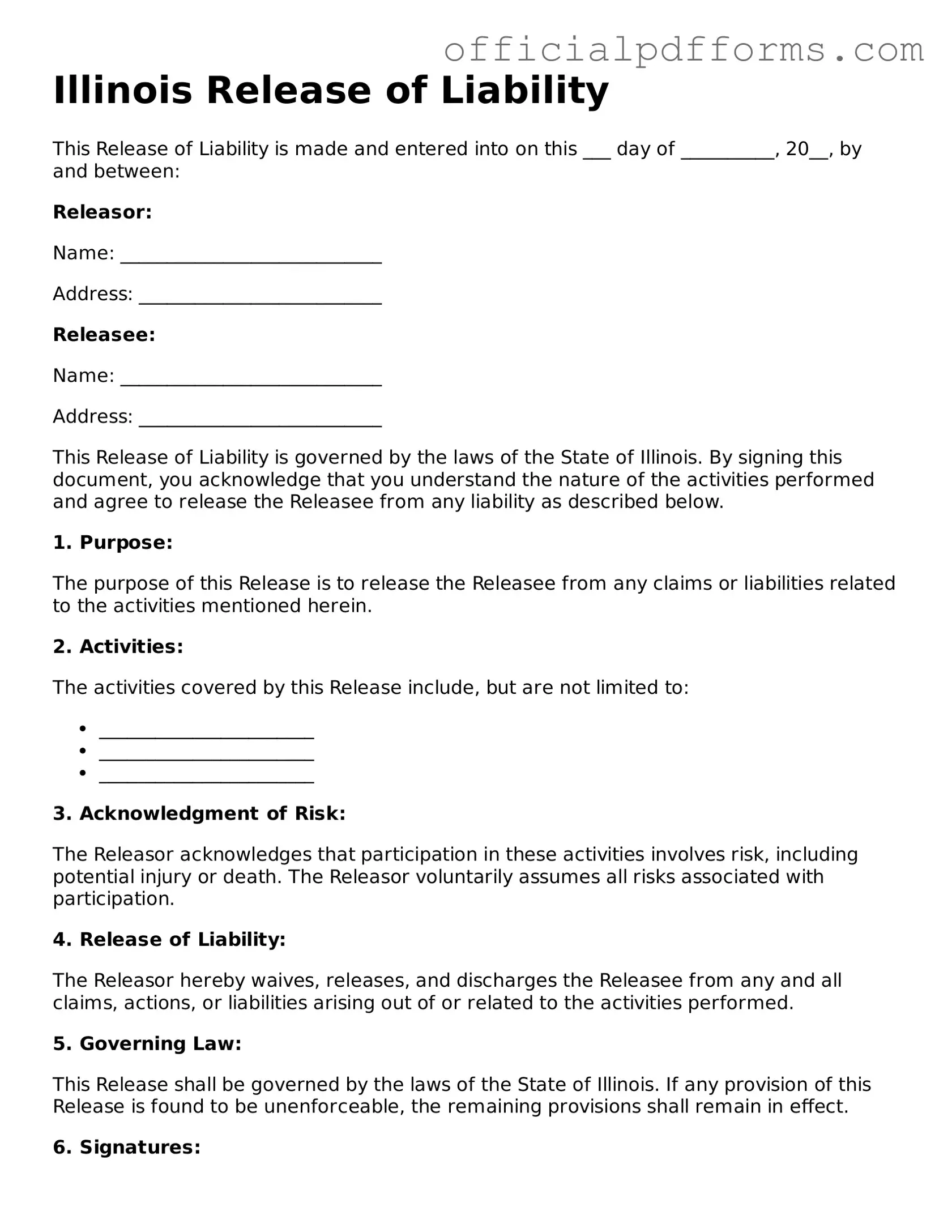The Illinois Release of Liability form is a legal document that allows individuals or organizations to limit their liability for injuries or damages that may occur during specific activities. By signing this form, participants acknowledge the risks involved and agree not to hold the organization or individual responsible for any potential injuries or damages.
This form is commonly used in various situations, including:
-
Sports events
-
Recreational activities
-
Workshops or classes
-
Outdoor adventures
It is advisable to use this form whenever there is a risk of injury associated with an activity and when participants are required to acknowledge those risks.
Typically, all participants in the activity should sign the form. If the participant is a minor, a parent or legal guardian must sign on their behalf. This ensures that the organization is protected from claims that may arise from injuries sustained by minors.
While signing the form indicates that participants acknowledge the risks and agree not to hold the organization liable, it does not completely eliminate the right to sue. If the organization is found to be negligent or if the injuries are caused by willful misconduct, a lawsuit may still be possible.
Yes, the Release of Liability form is generally enforceable in Illinois, provided it meets certain legal standards. The form must be clear, unambiguous, and voluntarily signed by the participant. Courts may review the context in which the form was signed to determine its enforceability.
A well-drafted Release of Liability form should include the following elements:
-
The names of the parties involved
-
A clear description of the activity
-
A statement acknowledging the risks associated with the activity
-
A waiver of liability clause
-
Signature lines for participants and, if applicable, guardians
Yes, the form can be modified to suit the specific needs of the activity or organization. However, any modifications should be made carefully to ensure that the legal protections remain intact. It is advisable to consult with a legal professional when making changes to ensure compliance with Illinois law.
Release of Liability forms can be obtained from various sources, including:
-
Online legal document services
-
Legal professionals or law firms
-
Local government websites
Ensure that any form you use is tailored to Illinois law and meets the specific requirements of your activity.
